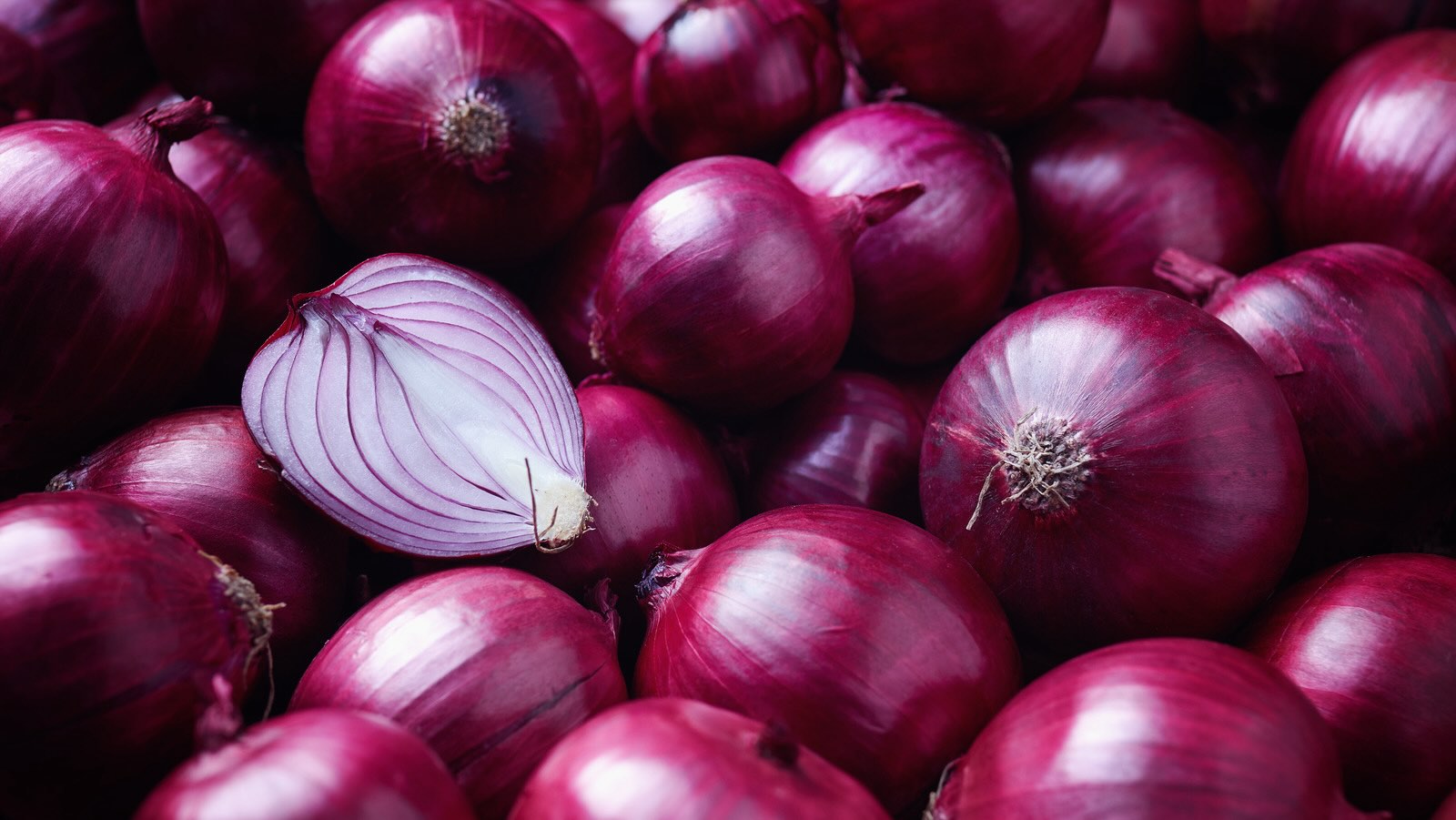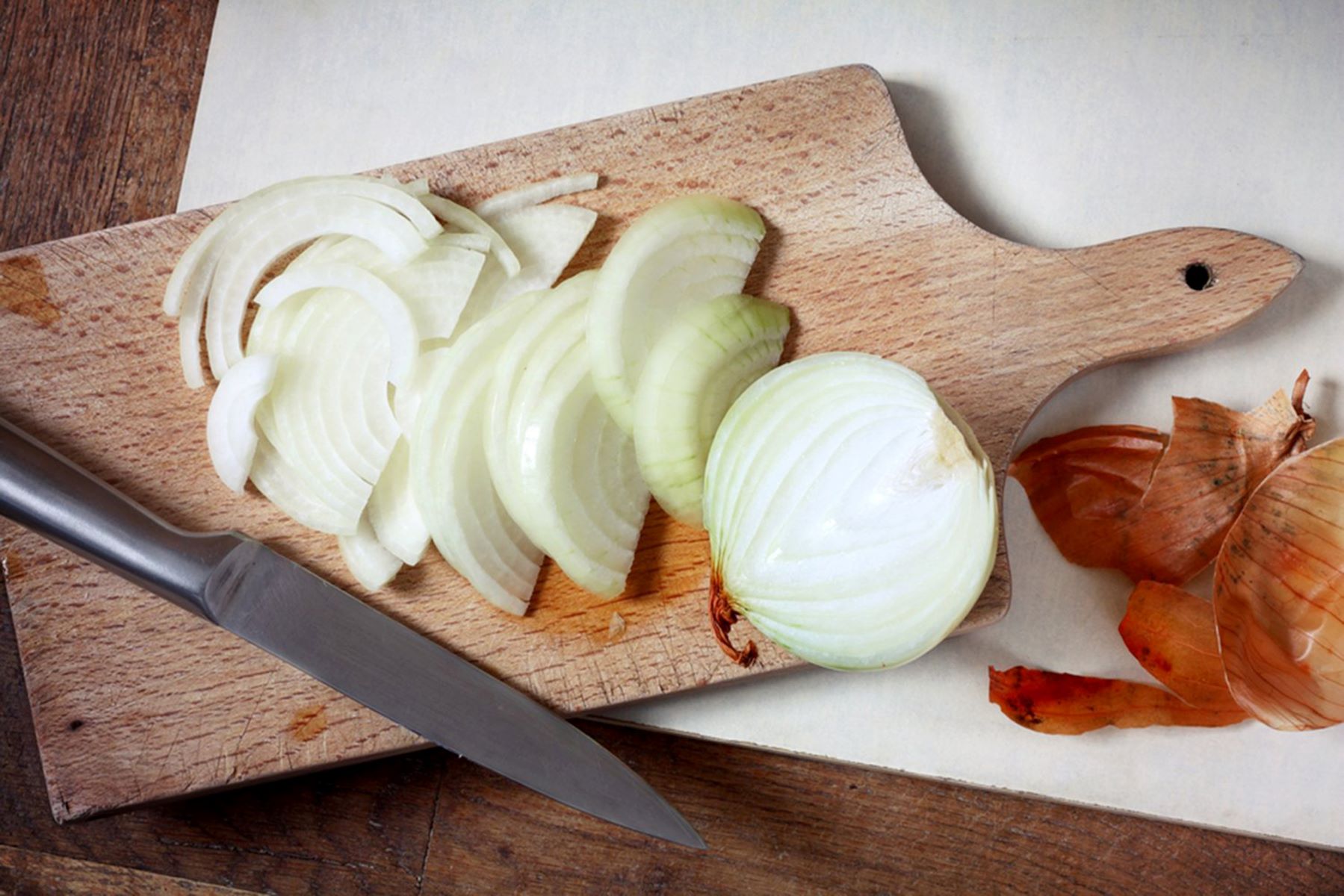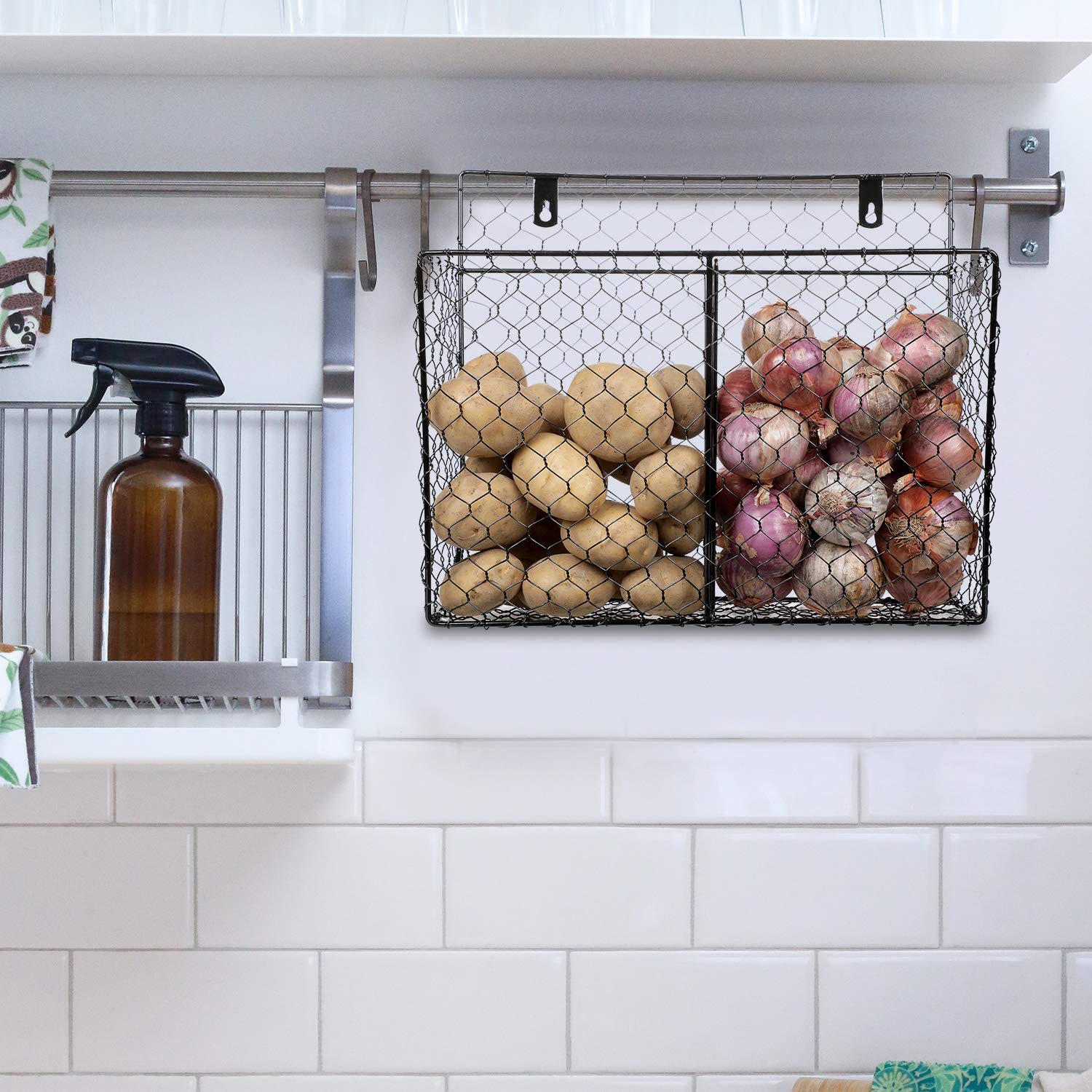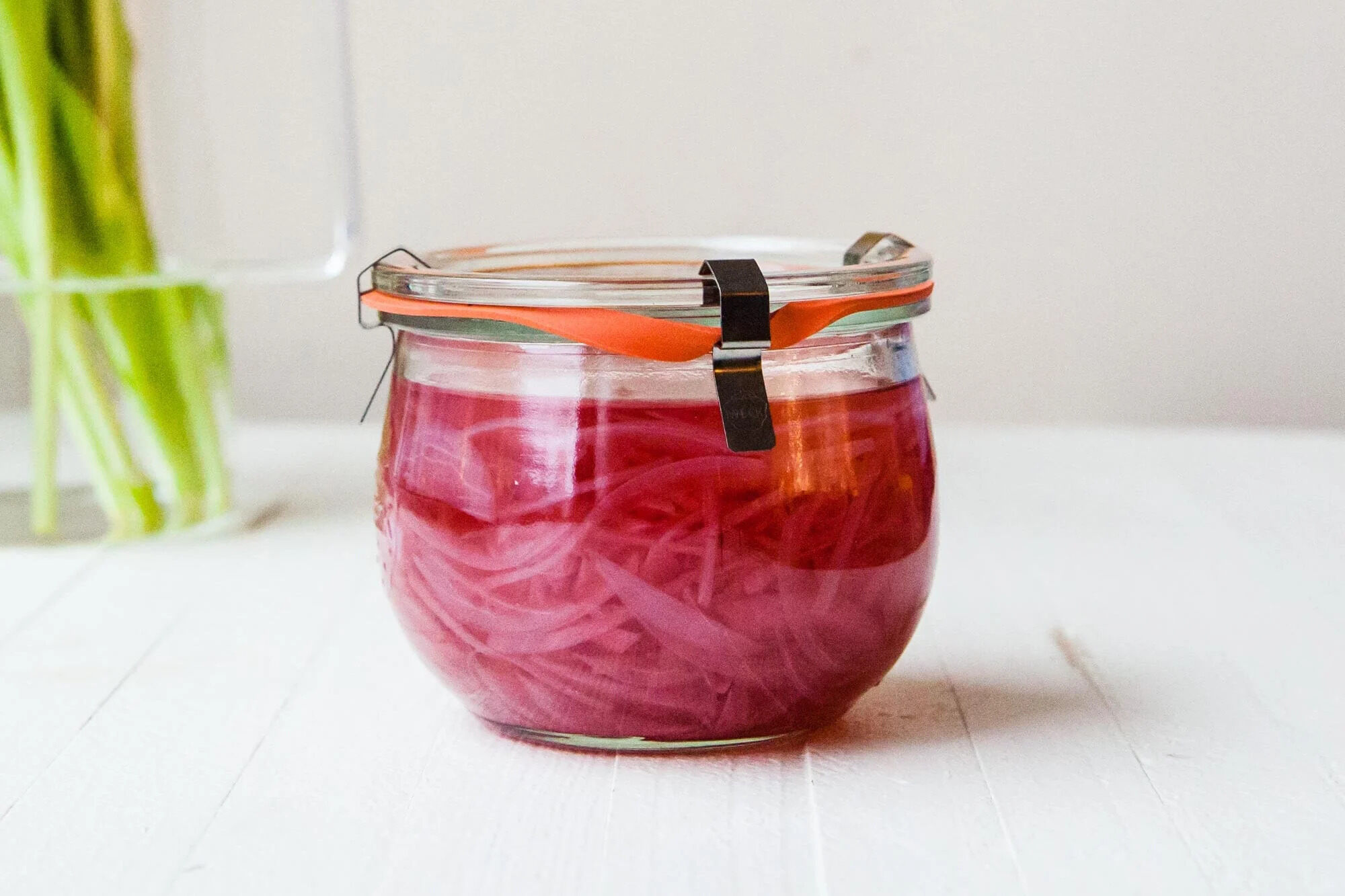

Articles
How To Store White Onions
Modified: August 20, 2024
Discover the best way to store white onions and keep them fresh for longer. Read our articles for useful tips and tricks on onion storage.
(Many of the links in this article redirect to a specific reviewed product. Your purchase of these products through affiliate links helps to generate commission for Storables.com, at no extra cost. Learn more)
Introduction
Welcome to a comprehensive guide on how to store white onions! If you’re a fan of these versatile and flavorful vegetables, you probably know that they can enhance the taste of countless dishes. Whether you use them raw in salads or sauté them to create a flavorful base for soups and sauces, white onions are a staple in many kitchens.
However, like all fresh produce, white onions have a limited shelf life. Proper storage is essential to maintain their freshness and flavor for as long as possible. In this article, we will explore the best practices for storing white onions, ensuring that you can enjoy their deliciousness for weeks or even months.
Before we dive into the specifics of storing white onions, let’s take a moment to understand what makes them unique. White onions are known for their mild and slightly sweet flavor. They have a crisp texture that turns tender when cooked, making them a versatile ingredient in various recipes.
White onions have a white papery skin that protects the layers within. The outer layers are firm and crunchy, gradually becoming softer towards the center. When selecting white onions for storage, it’s crucial to choose ones that are firm, with no signs of soft spots or sprouting.
Now that we have a basic understanding of white onions, let’s move on to learning about the optimal storage conditions to ensure they stay fresh and flavorful.
Key Takeaways:
- Proper storage of white onions is crucial for maintaining their freshness and flavor. By understanding their unique characteristics and following optimal storage practices, you can enjoy their versatility in various recipes for extended periods.
- Monitoring and maintaining the quality of stored white onions is essential. Regular inspections, proper ventilation, and prompt removal of spoiled onions help prolong their shelf life and ensure the best flavor for your culinary creations.
Read more: How To Store Onions
Understanding White Onions
White onions are a variety of onion that is characterized by its white papery skin and mild flavor. They are widely used in cooking due to their versatility and compatibility with a wide range of dishes. Unlike other types of onions, white onions have a higher water content and a milder, slightly sweeter taste.
White onions are commonly used in raw preparations such as salsas, salads, and sandwiches. They add a crisp texture and a mild onion flavor without overpowering other ingredients. The mild flavor of white onions also makes them ideal for dishes where a subtle onion taste is desired, such as soups, stews, and stir-fries.
White onions are typically available year-round and can be found in most grocery stores and supermarkets. When selecting white onions, look for ones that are firm and heavy for their size. Avoid onions with soft spots or signs of mold. The outer skin should be dry and papery, without any blemishes or discoloration.
One of the key factors in properly storing white onions is understanding their composition. White onions have a high water content, which makes them more susceptible to spoilage if not stored correctly. Excessive moisture can lead to sprouting, rotting, and a loss of flavor. Therefore, it is important to provide the right storage conditions to ensure their longevity.
Another factor to consider when storing white onions is their sensitivity to temperature and humidity. Onions prefer cool, dry environments with good air circulation. High temperatures and humidity can promote sprouting and accelerate decay. It is essential to avoid storing onions in areas with high humidity, such as basements or areas near water sources.
Now that we have a good understanding of white onions and their characteristics, let’s explore the optimal storage conditions to keep them fresh and flavorful.
Choosing the Right Storage Conditions
Proper storage conditions are crucial for maximizing the shelf life and quality of white onions. By providing the right environment, you can ensure that your onions stay fresh, crisp, and flavorful for an extended period. Here are some key factors to consider when choosing the right storage conditions for white onions:
Temperature: White onions prefer cool temperatures ranging from 45 to 55 degrees Fahrenheit (7 to 13 degrees Celsius). It is important to avoid exposing them to extreme heat or cold as this can affect their flavor and texture. Keep in mind that onions are sensitive to temperature fluctuations, so try to maintain a consistent temperature in the storage area.
Humidity: Onions require low humidity levels to prevent moisture buildup, which can lead to spoilage. Aim for a humidity level of around 65 to 70 percent. Avoid storing onions in areas with high humidity, such as basements or near steamy environments, as this can promote rotting and sprouting.
Air Circulation: Good air circulation is essential in preventing moisture buildup and maintaining onion quality. Ensure that the storage area has adequate ventilation to facilitate the movement of fresh air around the onions. Avoid tightly sealed containers or plastic bags, as they can trap moisture and lead to decay.
Light: White onions should be stored in a dark place, away from direct sunlight. Exposure to light can cause onions to sprout prematurely and develop a bitter taste. Choose a storage area that is cool and dark to preserve the quality of the onions.
Separation: To prevent the spread of spoilage, it is important to store white onions separately from other fruits and vegetables. Onions emit a gas called ethylene, which can accelerate the ripening process and affect the quality of nearby produce. Keep onions in a separate area or store them in containers to avoid cross-contamination.
By considering these factors and providing the right storage conditions, you can extend the shelf life of white onions and enjoy their fresh taste in your culinary creations for longer periods.
Preparing White Onions for Storage
Before storing white onions, it is important to properly prepare them to ensure their longevity and quality. By taking a few simple steps, you can help preserve the freshness and flavor of the onions. Here are some essential tips for preparing white onions for storage:
Cleaning: Start by cleaning the white onions to remove any dirt or debris. Gently brush off any loose dirt using a soft brush or cloth. Avoid using water to clean the onions, as excess moisture can promote spoilage. Wipe them dry if needed.
Trimming: Inspect the onions and carefully trim any damaged or bruised parts. This will help prevent the spread of decay and extend the shelf life of the onions. Use a clean knife to remove any blemished areas, ensuring that the layers beneath are intact.
Curing: Curing is an important step in the preparation of white onions for long-term storage. It involves drying out the outer layers of the onions to create a protective barrier. Place the cleaned and trimmed onions in a well-ventilated area with good air circulation. Leave them for a week or two until the outer skin becomes dry and papery. Curing helps reduce moisture content and minimizes the risk of rotting during storage.
Sorting: After curing, sort the onions based on their size and condition. Separate any smaller or damaged onions from the larger, healthier ones. This will help you plan your usage and ensure that you consume the onions with the shortest shelf life first.
Labeling: It’s a good practice to label your onions with the date of storage. This will help you keep track of their shelf life and prioritize their usage accordingly. Use a marker or label to indicate the storage date on the container or bag where the onions are stored.
By following these steps, you can prepare white onions for storage in a way that promotes their longevity and maintains their quality. Remember, proper preparation is essential for preserving the flavor and texture of the onions throughout the storage period.
Storing White Onions in a Cool Dry Place
One of the most common methods for storing white onions is to keep them in a cool, dry place. This method is ideal for individuals who do not have access to a refrigerator or prefer to store their onions at room temperature. Storing white onions in a cool dry place requires the following steps:
Select the Right Location: Choose a storage area that is cool, dry, and well-ventilated. Ideally, this location should have a temperature range of 45 to 55 degrees Fahrenheit (7 to 13 degrees Celsius) and a humidity level of around 65 to 70 percent. Basements, pantries, or root cellars are typically good options for storing onions.
Avoid High Humidity: Onions are sensitive to moisture and can rot if exposed to high humidity levels. Ensure that the storage area is dry and has proper air circulation. Avoid storing onions in areas near water sources or places prone to condensation.
Use Onion Bags or Baskets: Place the white onions in breathable containers such as mesh onion bags or wooden baskets. These containers allow for good air circulation, preventing moisture buildup and extending the shelf life of the onions. Avoid using tightly sealed plastic bags or containers, as they can trap moisture and promote rotting.
Avoid Stacking: Do not stack or pile up the onions on top of each other. Instead, place them in a single layer, allowing air to circulate around each onion. Stacking can cause the onions to spoil faster due to limited airflow.
Check Regularly: Periodically inspect your stored white onions for any signs of spoilage or decay. Remove any onions that show soft spots, mold, or sprouting. By regularly monitoring the condition of the onions, you can prevent the spread of spoilage and ensure that only the fresh ones remain in storage.
Storing white onions in a cool dry place can prolong their shelf life and preserve their flavor and texture. Just remember to choose the right location, use breathable containers, avoid stacking, and regularly check the onions for any signs of deterioration. With proper storage, you can enjoy the freshness and versatility of white onions well beyond their purchase date.
Store white onions in a cool, dry, well-ventilated place, such as a pantry or cellar. Avoid storing them in the refrigerator, as the moisture can cause them to become soft and moldy. Keep them in a mesh bag or a well-ventilated container to promote air circulation.
Read more: How To Store Garlic And Onions
Storing White Onions in the Refrigerator
If you prefer to store your white onions in a colder environment, the refrigerator can be an excellent option. Storing white onions in the refrigerator helps to slow down the process of sprouting and keeps them fresh for a longer period. Here’s how you can store white onions in the refrigerator:
Select the Right Storage Bag: Choose a breathable storage bag, such as a mesh bag or a perforated plastic bag. These bags allow for air circulation, preventing excess moisture buildup and maintaining the quality of the onions.
Place in the Vegetable Drawer: Store the white onions in the vegetable drawer of your refrigerator. This drawer is designed to provide slightly higher humidity levels compared to the rest of the refrigerator. It helps to maintain the crispness and freshness of the onions.
Avoid Storing with Certain Foods: Keep white onions away from foods that emit ethylene gas, such as apples and potatoes. Ethylene gas can cause onions to spoil faster and affect their flavor. Store onions separately or in a different compartment to prevent cross-contamination.
Keep the Temperature Consistent: Ensure that the refrigerator temperature is consistently set between 35 to 40 degrees Fahrenheit (1 to 4 degrees Celsius). Avoid storing the onions near the back of the refrigerator where it may be coldest and excessively cold temperatures can affect the texture and flavor of the onions.
Check for Sprouting and Decay: Regularly inspect the stored white onions for any signs of sprouting or decay. Remove any onions that show signs of spoiling to prevent the spread of decay to other onions. Discard any soft or moldy onions to preserve the quality of the ones that are still fresh.
Storing white onions in the refrigerator can help extend their shelf life and maintain their freshness. However, it’s important to note that refrigeration can change the texture and flavor of onions over time. Therefore, it’s recommended to use refrigerated onions within a few weeks for optimal taste and quality.
Whether you choose to store your white onions in a cool, dry place or in the refrigerator, proper storage will undoubtedly help you enjoy the flavor and versatility of these culinary staples for a longer duration. Experiment with different storage methods to find the one that suits your preferences and kitchen setup best.
Using Proper Containers for Storing White Onions
Choosing the right containers for storing white onions is essential to maintain their freshness and prevent spoilage. Proper containers provide protection, promote air circulation, and help control moisture levels. Here are some tips for using the right containers to store white onions:
Breathable Containers: Opt for breathable containers that allow for air circulation. Mesh bags, woven baskets, or open crates are excellent choices as they prevent moisture buildup and promote airflow around the onions. Avoid using airtight or tightly sealed containers, as they can trap moisture and lead to rotting.
Perforated Plastic Bags: If you prefer using plastic bags, choose ones with perforations or small holes. These bags offer some airflow while still protecting the onions from excessive moisture. Place the onions in the perforated bags and ensure that the air can freely circulate through the holes.
Avoid Direct Sunlight: When using containers, make sure they are opaque or stored in a dark area to avoid exposure to sunlight. Direct sunlight can accelerate the spoiling process and affect the quality of the onions. A dark and cool pantry or cupboard can be a suitable location for storing the containers.
Keep the Containers Clean: Before using any containers, ensure they are clean and free from any residue or contaminants. Wash and dry the containers thoroughly to prevent the transfer of bacteria or molds to the onions. Regularly clean and inspect the containers to maintain a healthy storage environment.
Separate Onion Varieties: If you store different varieties of onions together, be cautious not to mix them in the same container. Each onion variety has different storage requirements, and mixing them can lead to uneven ripening, faster spoiling, or the transfer of flavors. Keep them separate to maintain the optimal storage conditions for each variety.
Labeling: It’s a good practice to label the containers with the date of storage. By marking the date, you can keep track of the freshness of the onions and prioritize their consumption accordingly. This helps ensure that you use the oldest onions first, reducing waste and maintaining the quality of the remaining ones.
By using proper containers that allow for adequate airflow and protect the onions from excess moisture, you can prolong the shelf life and preserve the flavor of your white onions. Remember to clean the containers, separate different onion varieties, and label them for easy tracking. With the right containers, you can enjoy fresh and flavorful onions for an extended period of time.
Monitoring and Maintaining Onion Quality
Monitoring and maintaining the quality of white onions is crucial to ensure that they remain fresh, flavorful, and free from spoilage. By regularly checking and following a few simple steps, you can extend the shelf life and enjoy the best quality onions. Here are some tips for monitoring and maintaining the quality of white onions:
Regular Inspection: Regularly inspect your stored onions for any signs of spoilage, such as soft spots, mold, or sprouting. Remove any onions that show these signs to prevent the spread of decay to other onions. A simple visual check every couple of weeks can help identify any potential issues.
Proper Air Circulation: Ensure that the stored onions have proper air circulation. Good ventilation prevents moisture buildup and maintains the quality of the onions. Check that your storage area allows fresh air to flow around the onions, especially if using closed containers or drawers.
Temperature and Humidity Control: Monitor the temperature and humidity levels in your storage area or refrigerator. Keep the temperature consistent and within the recommended range of 45 to 55 degrees Fahrenheit (7 to 13 degrees Celsius). Avoid high humidity, as it can promote rotting and spoiling of the onions.
Remove Spoiled Onions Promptly: If you notice any onions that are starting to spoil, it’s important to remove them immediately. One rotten onion can quickly contaminate the others, leading to a faster deterioration of the whole batch. Discard any soft, moldy, or sprouted onions to maintain the quality of the remaining ones.
Adjust Storage Conditions if Needed: If you observe any issues with the quality or condition of the white onions, reassess the storage conditions. Look for any potential problems, such as increased humidity or temperature fluctuations. Make necessary adjustments to maintain the optimal storage environment and prevent further spoilage.
Rotate Onions Regularly: To ensure that you consume the onions in a timely manner, practice FIFO (First-In, First-Out) rotation. Use the oldest onions first before moving on to the newer ones. By regularly rotating your onion stock, you can minimize waste and enjoy the freshest onions available.
By actively monitoring the condition of your stored onions and taking proactive steps to maintain their quality, you can prolong their lifespan and enjoy their freshness. Regular inspections, proper ventilation, temperature and humidity control, promptly removing spoiled onions, and practicing FIFO rotation are all important aspects of maintaining onion quality.
Precautions and Tips for Storing White Onions
When it comes to storing white onions, there are some precautions and tips that can help you maintain their freshness and quality for a longer period. By following these guidelines, you can maximize the shelf life and ensure the best flavor of your stored onions. Here are some precautions and tips for storing white onions:
Avoid Storing Near Potatoes: Potatoes release natural gases, including ethylene gas, which can accelerate the ripening process of onions and lead to faster spoilage. Keep white onions away from potatoes to prevent them from spoiling prematurely. Ideally, store them in separate containers or areas.
Do Not Store Next to Fruits: Similar to potatoes, certain fruits like apples and bananas also release ethylene gas, which can affect the quality and storage life of onions. Keep onions away from fruits to maintain their freshness and prevent premature sprouting or flavor alteration.
Separate Different Onion Varieties: Different onion varieties may have different storage requirements. To maintain their individual qualities and flavors, store different onion varieties separately. This prevents cross-contamination and preserves the unique characteristics of each variety.
Avoid Storing Cut Onions: Cut or peeled onions should be consumed or refrigerated immediately. Once an onion is cut, it becomes more susceptible to bacterial growth and moisture loss. Wrap cut onions tightly in plastic wrap or store them in airtight containers in the refrigerator for short-term storage.
Condensation Prevention: Moisture can lead to faster spoilage of onions. Before storing white onions, ensure they are completely dry. Moisture can also accumulate inside storage containers or bags. Regularly check for any condensation and wipe away any excess moisture to maintain optimal storage conditions.
Use the Right Storage Method for the Quantity: Consider the quantity of onions you have and choose the appropriate storage method accordingly. If you have a small batch, storing them in a cool, dry place may be sufficient. Larger quantities may require refrigeration or alternative long-term storage methods, such as drying or freezing.
Avoid Overcrowding: Overcrowding onions can limit airflow and increase the risk of spoilage. Ensure there is enough space between the onions in containers or bags to allow for proper air circulation. Overcrowding can also lead to the bruising and damage of onions, which can accelerate spoilage.
Monitor Regularly: Keep an eye on the stored onions and check their condition periodically. Regular monitoring allows you to catch any signs of spoilage or sprouting early on and take corrective action. Remove any onions showing deterioration promptly to prevent the spread of decay to other onions.
Store Only Unblemished Onions: When storing white onions, select only those that are firm and free from any soft spots, mold, or signs of decay. Blemished onions are more likely to spoil quickly and can affect the quality of surrounding onions. Remove and use blemished onions first before they further deteriorate.
By following these precautions and tips for storing white onions, you can extend their shelf life, maintain their quality, and enjoy their delicious flavor in your culinary creations. With proper storage and attention, your white onions will stay fresh and ready to enhance your meals for an extended period.
Read more: How To Store Caramelized Onions
Conclusion
Storing white onions properly is essential for maintaining their freshness, flavor, and quality over time. By understanding the unique characteristics of white onions and following the right storage practices, you can enjoy their versatility in various recipes for weeks or even months.
Whether you choose to store white onions in a cool dry place or in the refrigerator, it’s important to provide the right storage conditions. Keep the temperature between 45 to 55 degrees Fahrenheit (7 to 13 degrees Celsius) with low humidity for optimal results. Use breathable containers, such as mesh bags or wooden baskets, to allow for proper air circulation and prevent moisture buildup.
During the storage process, it’s crucial to monitor the onions, inspect them regularly, and remove any spoiled or deteriorating onions promptly to prevent the spread of decay. By rotating your onion stock and using older onions first, you can minimize waste and ensure you enjoy the freshest onions available.
Remember to take precautions when storing white onions. Keep them separate from ethylene-gas-releasing fruits and potatoes, as these can negatively impact their quality. Avoid storing cut onions for an extended period and be mindful of excess moisture and condensation that can lead to spoilage.
By following these tips and guidelines, you can maximize the shelf life of white onions and savor their delicious flavor for longer periods. Properly stored white onions will enhance the taste of your culinary creations, adding a delightful and aromatic touch to various dishes.
So whether you’re using white onions to add depth to a savory dish or incorporating them into a refreshing salad, take the time to store them correctly. By doing so, you can ensure that your white onions retain their crispness, mild flavor, and nutritional value, providing you with an enjoyable cooking experience and delicious meals.
Frequently Asked Questions about How To Store White Onions
Was this page helpful?
At Storables.com, we guarantee accurate and reliable information. Our content, validated by Expert Board Contributors, is crafted following stringent Editorial Policies. We're committed to providing you with well-researched, expert-backed insights for all your informational needs.














0 thoughts on “How To Store White Onions”